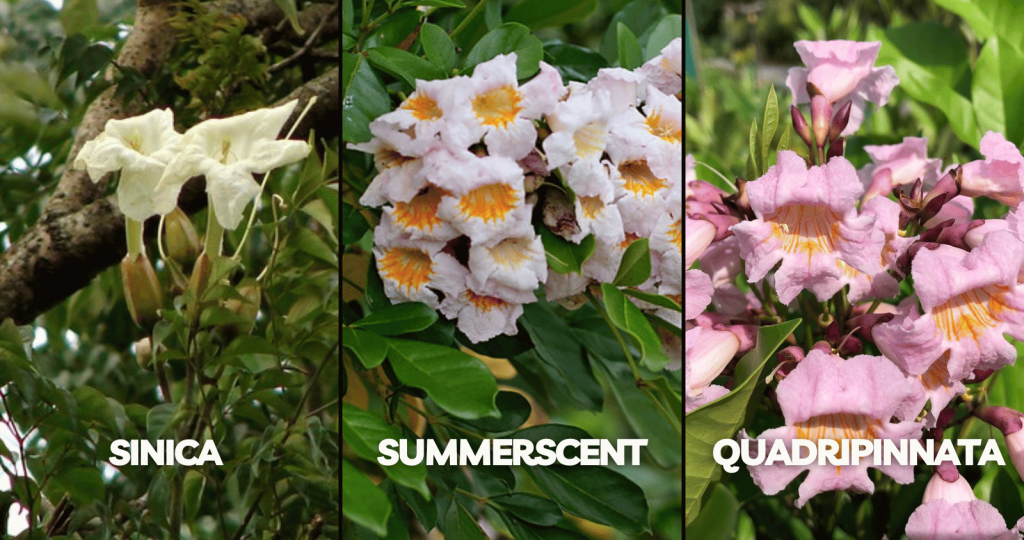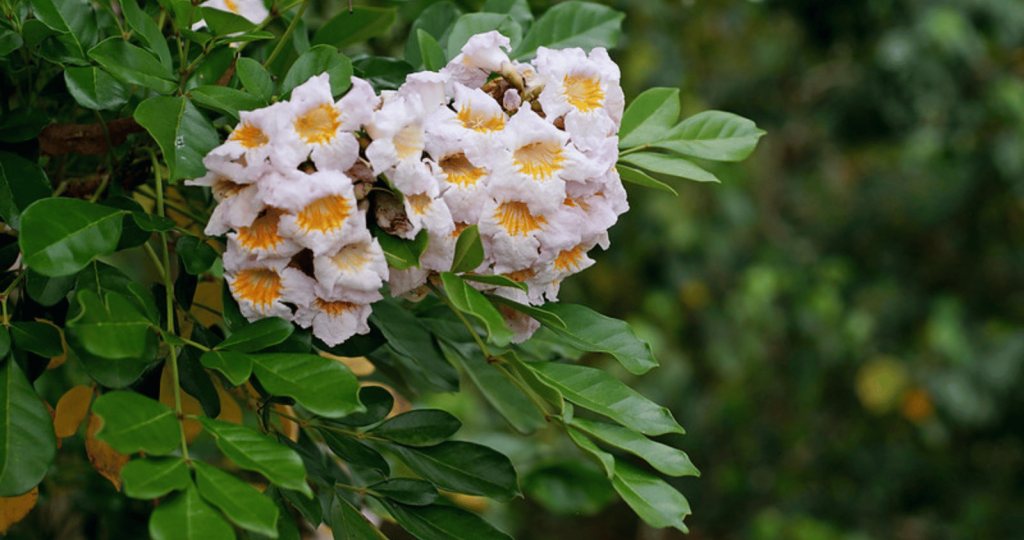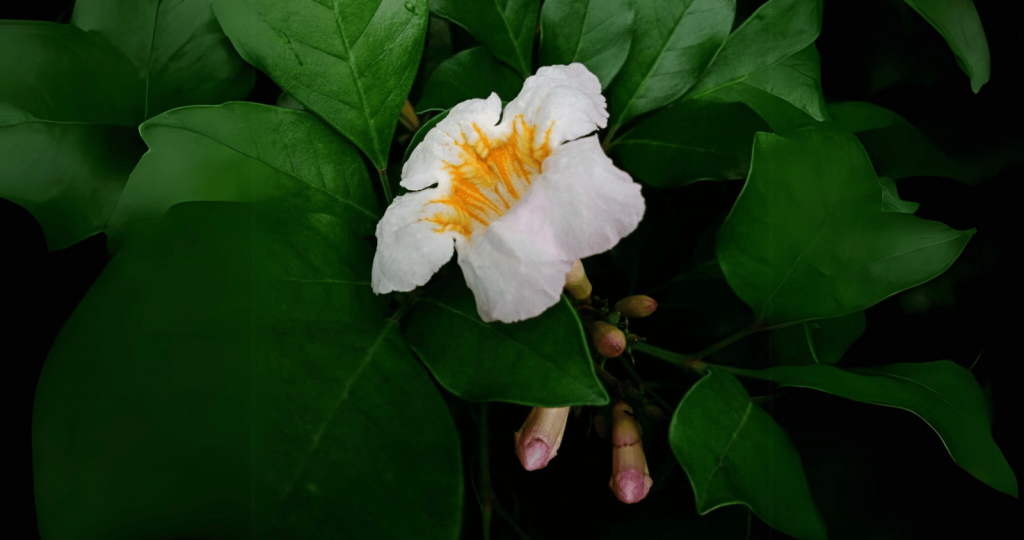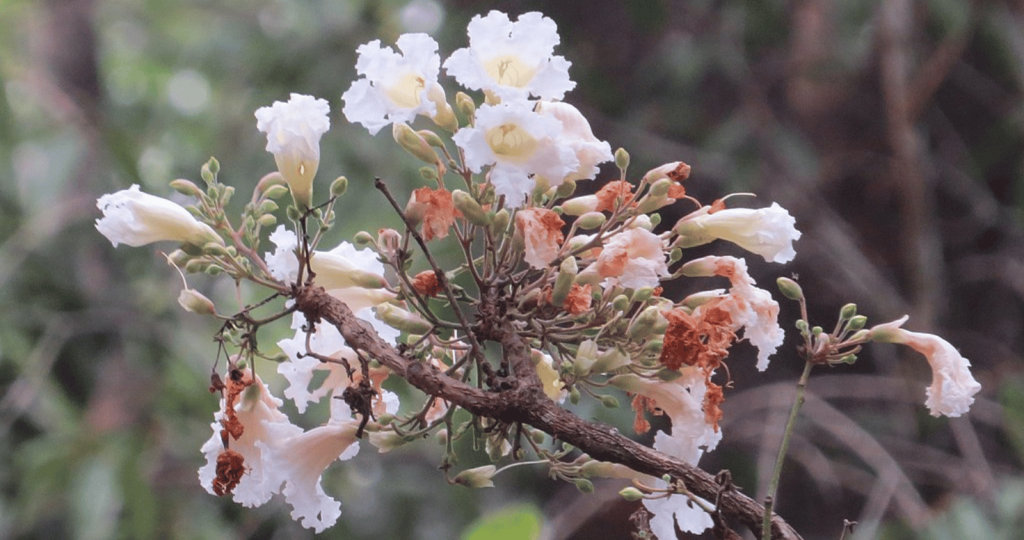
Where Does Radermachera Summerscent Come From?
Radermachera summerscent is native to Asia, particularly regions with tropical climates. It is popular for its compact growth habit and attractive foliage, making it a popular choice for gardens and indoor spaces worldwide.

Varieties and Popularity in Australia
Radermachera, commonly known as China Doll or Emerald Tree, is a popular choice for gardens and indoor spaces due to its lush foliage and compact size. In Australia, the most popular varieties are Radermachera sinica and Radermachera summerscent, known for their vibrant green leaves and elegant appearance. These varieties are well-suited to Australian climates, thriving in both indoor and outdoor settings.
Gardeners often use it as an ornamental plant in gardens, landscaping, and even as indoor houseplants, adding a touch of elegance and beauty to any space. Radermachera is also valued for its low maintenance requirements, making it an ideal choice for both experienced and novice gardeners. With its ability to thrive in a variety of conditions and its stunning appearance, it is no wonder that Radermachera has become a popular choice among Australian gardeners.
Size and Growing Conditions
Radermachera can grow up to 2-3 meters in height, making it ideal for small gardens or as a potted plant. It thrives in well-draining soil with a slightly acidic pH and prefers bright, indirect sunlight (to find out what your soil PH is use this kit). While it is best suited to warm, tropical climates, Radermachera can also adapt to cooler temperatures if protected from frost.
Is Radermachera Fast-Growing?
Radermachera is considered moderately fast-growing, especially during the growing season when provided with proper care and conditions. Its growth rate can be accelerated with regular fertilization and pruning to encourage new growth. With its lush foliage and attractive flowers, Radermachera can quickly fill out a space and create a beautiful focal point in any garden. Gardeners who are looking for a low-maintenance plant that adds a touch of tropical flair to their outdoor space often choose Radermachera for its easy care and quick growth.

How Big is Radermachera Summerscent?
Radermachera summerscent typically grows to a height of 2-3 meters, making it slightly smaller than some other varieties of Radermachera. Despite its smaller size, Radermachera summerscent still has the ability to make a big impact in any garden or outdoor space. Its compact nature makes it a versatile plant that can be easily incorporated into a variety of landscaping designs. Whether used as a standalone specimen or as part of a larger planting scheme, Radermachera summerscent is sure to bring beauty and tropical charm to any garden setting. Even though it may not reach the towering heights of other Radermachera varieties, its stunning foliage and flowers are sure to captivate all who encounter it.
Sunlight Requirements
To thrive, Radermachera requires bright, indirect sunlight. It should receive at least 4-6 hours of sunlight per day. If the plant is not getting enough light, it may become leggy, with sparse foliage and weak growth.

Can Radermachera Grow in Shade?
While Radermachera prefers bright, indirect sunlight, it can tolerate some shade. However, it may not thrive as well in low-light conditions and may become leggy with reduced foliage. If you need to place your Radermachera in a shadier spot, make sure to monitor its growth and adjust as needed. Consider supplementing with artificial grow lights if natural light is limited. Remember that while Radermachera can adapt to different light conditions, it will truly flourish with the right amount of sunlight. Ensure your plant receives the right balance of light to keep it healthy and vibrant.
Is Radermachera an Indoor Plant?
Yes, but only in very well-lit areas. Gardeners commonly grow Radermachera indoors as a houseplant due to its compact size and attractive foliage. It is well-suited to indoor environments as long as it gets enough lighting and care. Place your Radermachera next to a large window, and with 4 hours of direct sunlight, it should enjoy the spot.
Remember to water it regularly, provide adequate drainage, and keep it away from direct air conditioning as the dry, cold air is not good for the plant. Keep an eye out for any signs of distress to ensure your Radermachera remains healthy and vibrant.

Where is the best place to plant Radermachera?
Radermachera is best planted in a location that receives bright, indirect sunlight. It can be planted outdoors in a garden bed or in a pot on a patio or balcony. Indoors, it can be placed near a window with sheer curtains or in a well-lit room. The smaller size of Radermachera summerscent makes it a perfect choice for smaller gardens or outdoor spaces with limited room to grow. Its manageable height also makes it a popular choice for growing in containers on patios or balconies. Whether planted in the ground or in a pot, Radermachera summerscent is sure to add a touch of exotic beauty to any outdoor area.
Drought Tolerance and Watering
While Radermachera is not considered drought-tolerant, it does not like to sit in soggy soil. It is best to water the plant when the top inch of soil feels dry to the touch. On average, Radermachera needs about 15-30mm of water per week, but this can vary depending on the climate and soil conditions. Ensure proper drainage to prevent root rot. Overwatering can be just as damaging as underwatering, so it is important to find the right balance for your Radermachera summerscent. In hotter climates, you may need to increase watering frequency, while in cooler climates, you may need to water less often. Adding a layer of mulch around the base of the plant can help retain moisture and regulate soil temperature. By following these simple watering tips, you can help your Radermachera thrive and continue to beautify your outdoor space for years to come.

How often should I prune my Radermachera?
If you are wanting to maintain a Radermachera hedge light trimming every 4-6 weeks during the growing season will keep it in shape.
Light pruning every 3-6 months for general shrubs, trees and indoor Radermachera just to maintain shape will be enough.
How hard can I cut back my Radermachera?
Radermachera can handle a hard cut back and height reset. However, it is best to do this at the start of spring and make sure that the plant is not struggling from stresses like heat stress or root rot when doing this. Should you determine your Radermachera is experiencing heat stress, this product is great for helping with heat stress, best applied before the stress but can also help after or during a heat wave.
Best Soil For Radermachera?
Radermachera prefers well-draining soil with a slightly acidic pH. To improve the soil quality for your Radermachera summerscent, consider adding organic matter such as compost or peat moss to help retain moisture and improve drainage. Avoid using heavy, clay-based soils that can hold onto water and lead to root rot. Regularly check the soil moisture levels by sticking your finger into the soil about an inch deep – if it feels dry, it’s time to water. With the right soil type and proper watering techniques, your Radermachera will flourish and thrive in its environment.
- If your soil is too sandy, you can improve it by adding organic matter such as compost or peat moss. This will help the soil retain moisture and nutrients, promoting healthy growth for your Radermachera plant.
- For clay soil, adding perlite (here is where you can get perlite from) or sand can help improve drainage and create a more suitable environment for the plant to thrive. Regularly checking the soil moisture levels is crucial for the health of your Radermachera plant.
Fertilising Needs
Radermachera benefits from regular fertilisation during the growing season, especially if you have a very sandy soil. A balanced, water-soluble fertiliser is ideal, applied every 4-6 weeks. Be sure to follow the manufacturer’s instructions for dosage and application to avoid over-fertilizing, which can lead to nutrient imbalances and damage to the plant.
What Is the Best Fertilizer for Summerscent?
A balanced, water-soluble fertilizer formulated for indoor or outdoor plants is suitable for feeding Radermachera summerscent. Here is a great balanced organic fertiliser that can be used on just about every plant. Follow the manufacturer’s instructions for application rates and frequency to avoid over-fertilization.

Common Pests and Diseases
Pests
Common pests that can affect Radermachera include spider mites, aphids, and mealybugs. Inspect your plant regularly for any signs of pests, such as webbing, sticky residue, or small insects. If you notice any pests, treat your Radermachera with insecticidal soap or neem oil (here is where you can find some neem oil). Be sure to follow the instructions on the product label. Additionally, remember to provide proper air circulation. Avoid overwatering to prevent common diseases such as root rot and powdery mildew. Should powdery mildew appear, here is an organic fungicide that will help remove powdery mildew. With proper care and maintenance, your Radermachera summerscent should thrive and remain healthy.
Diseases
Common diseases include root rot and leaf spot. You can prevent these by avoiding overwatering and providing good air circulation around the plant. Using well-draining soil and ensuring the plant is not sitting in water for extended periods can help prevent root rot. If necessary, use fungicides to treat leaf spots. However, remember that proper watering and adequate sunlight can also help prevent this disease. By staying vigilant and proactive in caring for your Radermachera, you can help keep it healthy and thriving for years to come.

How Do You Prune Summerscent?
Pruning Radermachera Summerscent involves removing dead or overgrown branches to maintain its shape and promote healthy growth. Prune regularly to maintain its shape and size. Use sharp, clean pruning shears to make clean cuts (if you are looking for some really good shears, here are two great options depending on your budget: option 1 and option 2), and prune in late winter or early spring before new growth emerges. Avoid pruning too heavily, as this can stress the plant and affect its overall health.
Propagation
You can propagate Radermachera from stem cuttings. Take a cutting from a healthy, mature plant and place it in a pot with well-draining soil. Keep the soil moist and the cutting in a warm, bright location. Roots should start to form in a few weeks, at which point you can transplant the cutting into a larger pot or outdoors. We recommend using this rooting hormone to help root formation in your cuttings.

Common Mistakes
Three common mistakes gardeners make with Radermachera are overwatering, insufficient sunlight, and neglecting to prune regularly. By providing the right growing conditions and care, Radermachera can thrive and bring beauty to your garden or indoor space. With its stunning foliage and easy maintenance, Radermachera is a wonderful choice for both beginner and experienced gardeners alike.
- Overwatering: One of the most common mistakes gardeners make with Radermachera is overwatering. It is important to allow the soil to dry out slightly between waterings to prevent root rot. Using a well-draining potting mix and avoiding watering on a strict schedule can help prevent this issue.
- Insufficient sunlight: Radermachera plants require bright, indirect sunlight to thrive. If your plant is not receiving enough light, it may become leggy or stop growing altogether. Place your Radermachera near a window where it can receive plenty of natural light throughout the day. If necessary, consider supplementing with a grow light to ensure your plant gets the light it needs to stay healthy and vibrant.
- Neglecting to prune regularly: Neglecting to prune regularly can also lead to issues with your Radermachera plant. Regular pruning helps promote new growth. It also keeps the plant looking neat and tidy and prevents it from becoming too leggy or overgrown. It is recommended to prune your Radermachera plant every few months, trimming back any leggy or dead branches to encourage new growth.

Why Are the Leaves on My Radermachera Plant Turning Yellow?
There are a number of causes of yellowing leaves on Radermachera, including overwatering, underwatering, insufficient light, nutrient deficiencies, or pests. Properly diagnosing the underlying cause is essential to remedy the issue and restore the plant’s health. If you notice yellowing leaves on your Radermachera plant, the first step is to assess its watering schedule. Overwatering can lead to root rot and yellowing leaves, while underwatering can cause stress and nutrient deficiencies. Ensure that your plant is receiving the right amount of water based on its specific needs.
Additionally, check the plant’s light exposure, as insufficient light can also result in yellowing leaves. If necessary, move the plant to a brighter location to promote healthy growth. Nutrient deficiencies can be addressed with a balanced fertiliser specifically formulated for indoor plants. Finally, inspect the plant for any signs of pests, such as spider mites or mealybugs, which can also cause yellowing leaves. By addressing the underlying issue promptly, you can help your Radermachera plant thrive and maintain its vibrant foliage.

Benefits of Radermachera Summerscent
Radermachera Summerscent, a variety of the Radermachera plant species, offers several benefits that make it a desirable addition to any garden or indoor space.
- Fragrant Flowers: One of the most appealing features of Radermachera Summerscent is its fragrant flowers. When in bloom, the plant produces clusters of small, white flowers that emit a delightful scent.
- Attractive Foliage: Like other Radermachera varieties, Summerscent boasts lush, green foliage that adds beauty and vibrancy to any setting. The glossy leaves have a distinctive shape and texture, making the plant visually appealing even when not in bloom.
- Compact Growth Habit: Radermachera Summerscent typically maintains a compact growth habit, making it suitable for small gardens, balconies, or indoor spaces.
- Versatile Use: Whether planted outdoors in a garden bed, displayed in a decorative pot on a patio, or kept indoors as a houseplant, Radermachera Summerscent thrives in various environments.
- Low Maintenance: Like other Radermachera varieties, Summerscent is relatively low maintenance, requiring minimal care to thrive. As long as it receives adequate sunlight, water, and occasional fertilization, it can flourish with ease, making it an excellent option for busy gardeners or those new to plant care.
- Air-Purifying Qualities: Like many indoor plants, Radermachera Summerscent can help improve indoor air quality by filtering out pollutants and toxins. Its presence can contribute to a healthier indoor environment, promoting better respiratory health and overall well-being.
- Aesthetic Appeal: Beyond its practical benefits, Radermachera Summerscent adds aesthetic appeal to any space with its elegant appearance. Whether used as a focal point in a garden bed, a decorative accent on a patio, or a stylish houseplant indoors, its beauty enhances the ambiance of its surroundings.
